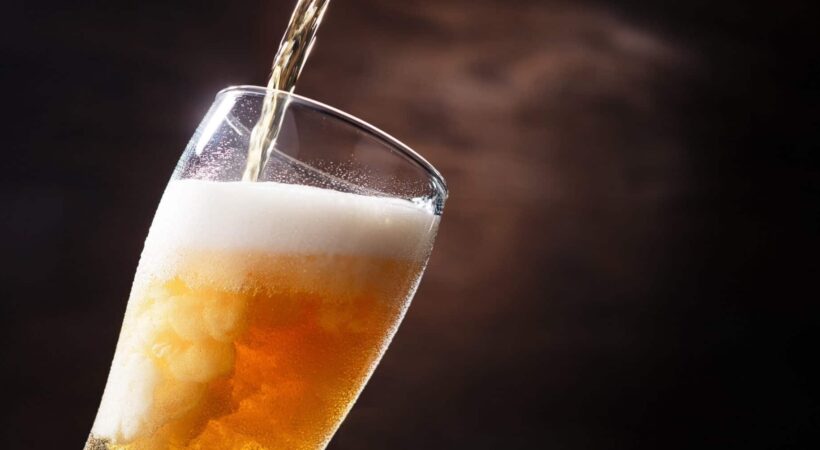A BEER? WE INVITE YOU TO KNOW THE TYPES OF BEER THAT EXIST IN THE WORLD.
All over the world beer is a reason to get together with friends or family, accompany good meat, celebrate your team’s victory, or cry because they lost; that is why today we are going to learn more about this cool drink that we all love:
The first two big beer families have yeast as a differentiating ingredient. They are Lager and Ale. The first family (Lager) uses Saccharomyces Carlsbergenesis or Saccharomyces Uvarum yeast and the second (Ale) uses Saccharomyces Cerevisiae yeast; curious fact, this yeast is also used to make bread.
Lager beers:
These are beers that use lager yeast that acts in the lower part of the fermenter. They generally require low fermentation temperatures and long fermentation times. It is common for a lager beer to ferment at less than 10 degrees, often even below 5 degrees, and for it to ferment for one to three months. The low fermentation temperatures mean that these beers can only be brewed in winter, in a cold room or refrigerator.
Lagers are beers normally made with few hops, light in color, and relatively low in alcohol content (between 3.5% and 5%). Most of the beers we drink in Mexico, whether in bottles or cans, are Lager because of how good it feels to be served very cold. Undoubtedly, we are a country that likes beer to be served chilled.
There is no rule that indicates what type of malt is in a Lager beer, although it is common for there to be a high percentage of light malt and little or no roasted or caramelized malt. Many recipes also contain a little wheat malt. Among the best-known lagers are Pilsner, Spezial, Dortmunster, Schwarzbier, Vienna, and most of the Bocks.
Ale beers:
Ale beers, unlike Lagers, are top-fermented, i.e. fermentation takes place on the surface of the fermenter. They are usually fermented at temperatures around 19° Celsius for short periods of 5 to 7 days (followed by a second fermentation to reduce the beer’s turbidity). They are usually beers made with a large number of hops and high alcohol content.
This type of beer is most consumed in the United Kingdom, the USA, Australia, and in general in the former British colonies. It is not recommended to be served chilled as we do with lager, it is usually a beer that should be drunk “on tap”.
Now it is time to know the difference between beers by the other ingredients.
- Wheat Beers: They are a whole category in themselves, and are especially important in Germany. They are made totally or partially with wheat malt, are clear in color, and low in alcohol content. They are fermented with Ale yeast. The best known, is the White Beer, the Weisse Beer, which delights the Oktober Fest in Munich.
- Pale Ale: A whole family of light-colored Ale beers, brewed with small proportions of roasted malt. But don’t let the color fool you; they are usually very hoppy beers and therefore with a lot of flavors, some of them even quite bitter. IPAs (Indian Pale Ale) stand out in this category, a very alcoholic and hop-rich beer designed to withstand long voyages to India. English Bitter is a classic in UK pubs and some American Ales made with US hops are superb.
Dark Ale: If “Pale Ale” means “Pale Ale”, then there had to be Dark Ale, i.e. Dark Ale. These are the Stouts and Porters described below.
- Stout beers: It is a very dark beer, made with a good proportion of roasted and caramelized malts and a good dose of hops. These beers have a thick and creamy texture with a strong malt aroma and a sweet aftertaste. They are ale beers. The most famous is undoubtedly the Irish Guinness. Within the Stout there are several subcategories, highlighting the Imperial Stout that carries a very high concentration of malt which gives it a high alcohol content once fermented.
Porter beers are for many a type of Stout, but somewhat less dark and powerful. They are also ale beers with exquisite color and also very rich in hops.
- Belgian Beers: Between the pale and dark beers, there is a whole category that comes from Belgium. These are beers of intense flavor, with a good dose of hops, but with the sweet background given by the amber and crystal malts. The color is usually marked by reddish tones, although there are Belgian Ales that are completely blond.
At La Vicenta we are very clear that the taste of the “chela” is directly proportional to the heaviness of the week. Don’t forget here we serve “chelas” wide open all day, every day!
For reservations at www.lavicenta.com.mx
